Some findings of outstanding neophytes from Rheinland-Pfalz are presented here. Frequent neophytes as Solidago, Amaranthus etc. aren't mentioned here because these have already been shown in Neophytes in the 'Kurpfalz', the presentation on the neophytes of the region around Mannheim and Heidelberg, which is just located at the other side of the Rhine than the Palatinate.
Right: The Common Blanket Flower Gaillardia aristata which seems to have escaped from a flower bed has run wild in the Rhine port of Ludwigshafen and reproduces steadily.

Gaillardia aristata / Common Blanket Flower
Asteraceae / Composite Fam.

Erigeron bonariensis / Argentine Fleabane
Asteraceae / Composite Fam.
In the city of Ludwigshafen Erigeron sumatrensis can be found beneath Erigeron bonariensis. Both originate from South America.

Erigeron sumatrensis / Tall Fleabane
Asteraceae / Composite Fam.

Solanum triflorum / Small Nightshade
Solanaceae / Nightshade Fam.
Left: A site of the Small Nightshade Solanum triflorum which has pinnate leaves can be found at the Rhine port of Ludwigshafen. Origin of the plant is North America.
Right: The Trailing Spurge Chamaesyce humifusa is similar to the Spotted Spurge Chamaesyce maculata but without dark spots on the leaves. It was imported from Asia. There is a site of it at the Rhine port of Ludwigshafen.

Chamaesyce humifusa / Trailing Spurge
Euphorbiaceae / Spurge Fam.

Epilobium brachycarpum / Panicled Willowherb, Tall Annual Willowherb
Onagraceae / Willowherb Fam.
Left: Panicled Willowherb Epilobium brachycarpum which has been introduced from America can grow abundantly on loose sandy soil, e.g. between old railway tracks in the Rhine port of Ludwigshafen.
Right: The Italian Lords and Ladies Arum italicum from the Mediterranean is grown in gardens as an ornamental plant. Recently reports are cumulating that it appears in gardens or on wasteland where it has never been planted. Presumably its red berries are spread by birds. In Ludwigshafen there was a site with hundreds of plants.
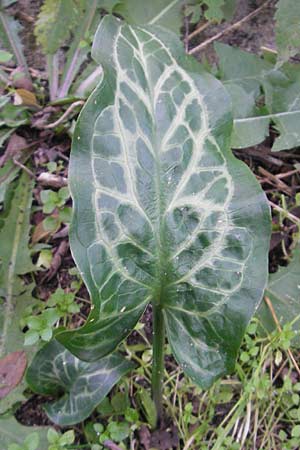
Arum italicum / Italian Lords and Ladies
Araceae / Arum Fam.
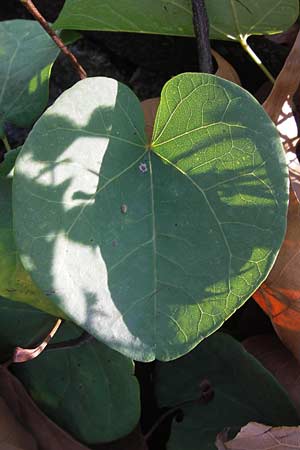
Cercis siliquastrum / Judas Tree
Fabaceae / Legumes
Left: The Judas Tree, which comes from the Mediterranean and Western Asia, has run wild at the river shore of the Rhine at Ludwigshafen coming from a nearby planting.
Right:
The Garden Baby's Breath Gypsophila scorzonerifolia comes from Russia and is also naturalized in parts of Eastern Germany. A strong plant grew on wasteland in the Kaiserwört port of Ludwigshafen.
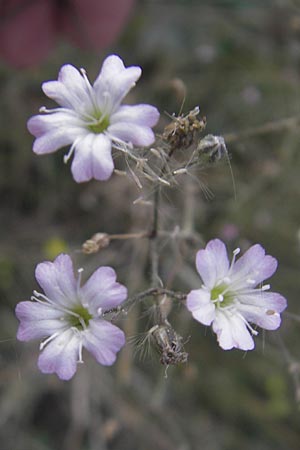
Gypsophila scorzonerifolia / Garden Baby's Breath
Caryophyllaceae / Campion Fam.
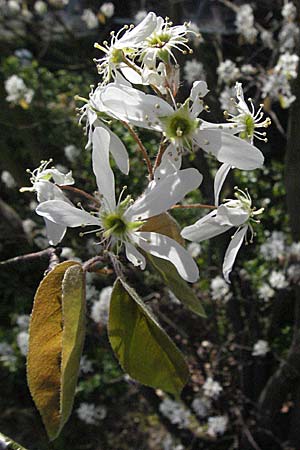
Amelanchier lamarckii / Allegheny Service Berry
Rosaceae / Rose Fam.

Taxus baccata / Yew
Taxaceae / Yew Fam.
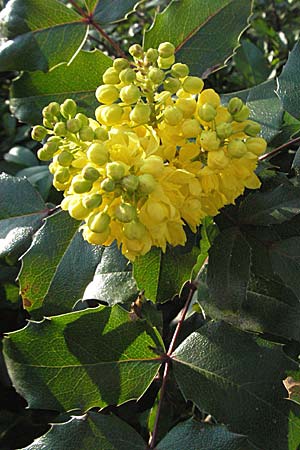
Mahonia aquifolium / Shining Oregon Grape, Tall Oregon Grape
Berberidaceae / Barberry Fam.
Gray's Sedge which originates from North America and which is cultivated as an ornamental plant because of its mace-like fruits, ran wild in the narrow riparian wood at the Rehbach near Rheingönheim.
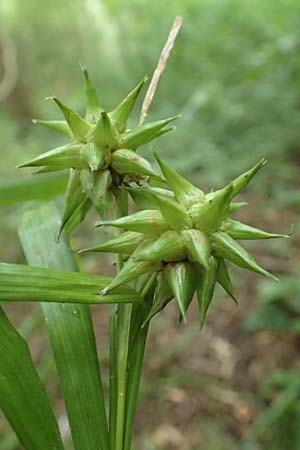
Carex grayi / Gray's Sedge, Mace Sedge
Cyperaceae / Sedge Fam.

Polycarpon tetraphyllum / Four-Leaved Allseed
Caryophyllaceae / Campion Fam.
Left: The Four-Leaved Allseed Polycarpon tetraphyllum arrived from the Western Mediterranian in our region. It can already be found in gaps between paving stones e.g. in Speyer and other locations.
Right:
This specimen of the Red Trumpet Wine near the Speyer cathedral seems to have come up out of seed.

Campsis x tagliabuana / Red Trumpet Wine
= Campsis grandiflora x radicans
Bignoniaceae / Catalpa Fam.

Crassula helmsii / Swamp Stonecrop, New Zealand Pygmyweed
Crassulaceae / Stonecrop Fam.
Left: A big population of Swamp Stonecrop Crassula helmsii grows in a pond near Schauernheim in Palatinate. It originates from Australia and New Zealand, here it is used in aquariums and at garden ponds.
Right: At the old Rhine branch of Bobenheim-Roxheim suddenly I stood in front of Chinese Fountain Grass Cenchrus alopecuroides which is used as decorative plant in gardens.
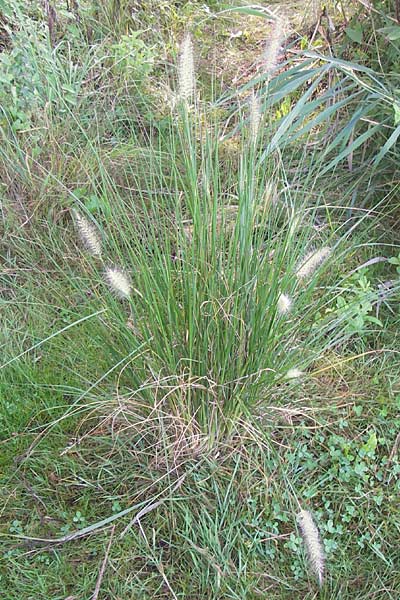
Cenchrus alopecuroides / Chinese Fountain Grass
Poaceae / Grass Fam.
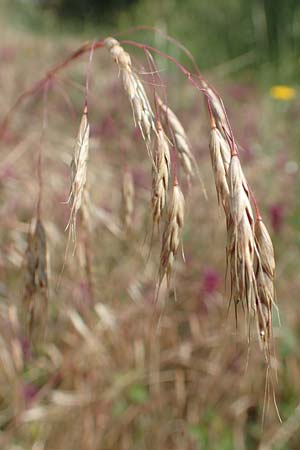
Bromus japonicus / Japanese Brome
Poaceae / Grass Fam.
Left: On the hill above Grünstadt-Asselheim we found the Japanese Brome Bromus japonicus numerously.
Right: On a railway area in the north of Germersheim Dense Silky-Bent Apera interrupta is found. Its origin is the Western Mediterranean.

Apera interrupta / Dense Silky-Bent, Interrupted Bent Grass
Poaceae / Grass Fam.
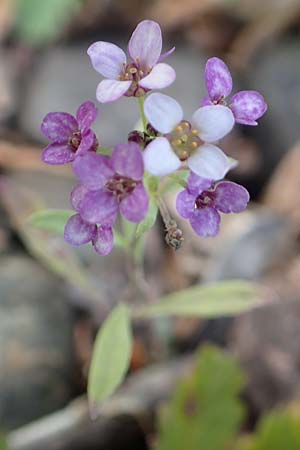
Lobularia maritima / Sweet Alison
Brassicaceae / Crucifers

Dysphania ambrosioides / West-Indian Goosefoot, Mexican Tea
Amaranthaceae / Amaranth Fam.

Dysphania pumilio / Clammy Goosefoot
Amaranthaceae / Amaranth Fam.
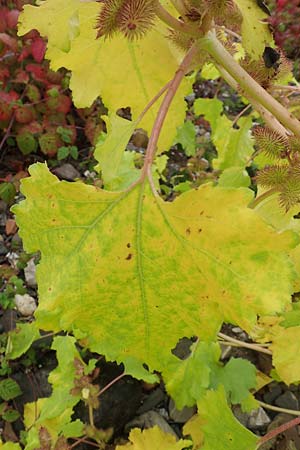
Xanthium saccharatum / Canada Cocklebur
Asteraceae / Composite Fam.

Symphyotrichum lanceolatum / Narrow-Leaved Michaelmas Daisy, White Panicle Aster
Asteraceae / Composite Fam.
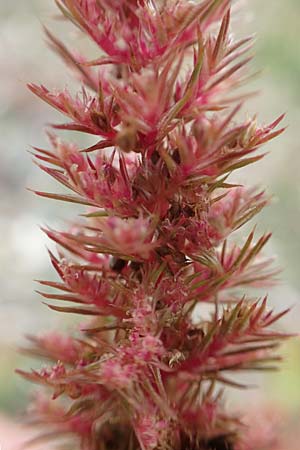
Amaranthus powellii / Green Pigweed
Amaranthaceae / Amaranth Fam.
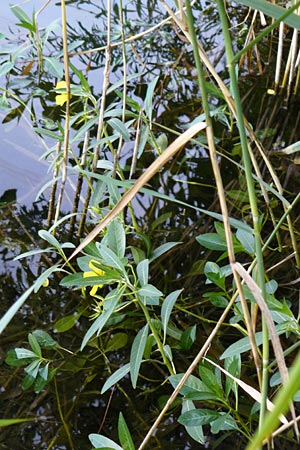
Ludwigia hexapetala / Large-flower Primrose-Willow
Onagraceae / Willowherb Fam.

Ludwigia hexapetala / Large-flower Primrose-Willow
Onagraceae / Willowherb Fam.
My finding of Large-flower Primrose-Willow Ludwigia hexapetala (a ploidy variant of Ludwigia grandiflora) at a quarry pont near Jockgrim (Palatinate) in August 2012 has been the first finding in Rheinland-Pfalz. Before that in Germany the plant had only been known from each a site in Baden-Württemberg and Niedersachsen. However in the neighbor countries France and Switherland the South-American plant is already widely distributed, and partly it is even fought as an invasive neophyte, because it is able to overgrow smaller ponds completely. Within ten years the population at Jockgrim has grown from a half square meter to two square meters.
Naturally this list of neophytic plants of Rheinland-Pfalz is far from completeness. It will be continued on occasion. There are similar sites on some neophytes in North Rhine-Westphalia, ... some neophytes in Hesse, ... some neophytes in (Southern) Baden, ... some neophytes in Württemberg, and the more extensive presentation on the neophytes of the 'Kurpfalz' region around Mannheim and Heidelberg.